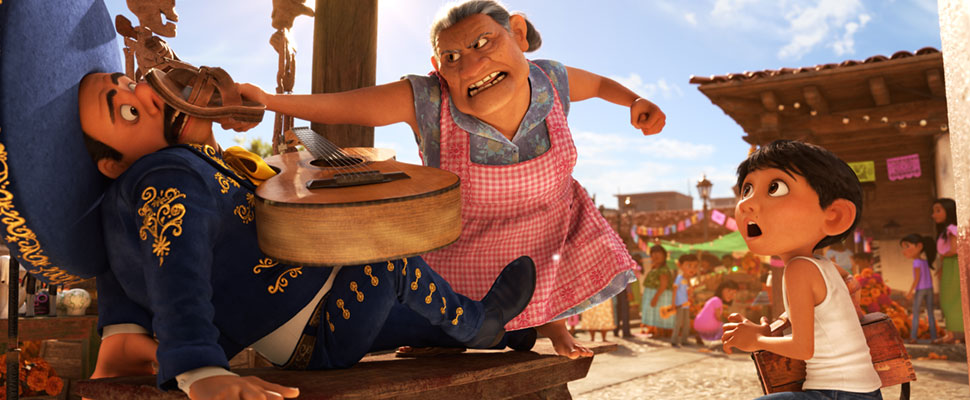The Evolution of Latino Representation in American Animation

In the colorful world of animation, Latino representation has undergone a remarkable transformation over the decades. From problematic stereotypes to authentic cultural celebrations, the journey reflects broader societal changes and growing recognition of diverse perspectives in media. This evolution hasn’t just entertained—it has educated and inspired generations of children, both Latino and non-Latino alike.
The Early Days: Stereotypes and Marginalization
The history of Latino representation in American animation begins with troubling depictions that reflected the sociopolitical climate of their times. Early political cartoons from the early 1900s often depicted Latin Americans as primitive or childlike, needing American guidance or intervention. These visual narratives reinforced harmful stereotypes that would persist for decades.
As animation evolved into a mainstream entertainment medium, Latino characters were largely absent or relegated to background roles. When they did appear, they were frequently reduced to one-dimensional stereotypes: the lazy Mexican sleeping under a sombrero, the fiery Latin lover, or the criminal from south of the border.
These early representations served to “other” Latino communities, positioning them outside the idealized American experience. This geographic, social, and economic marginalization in animated content reflected and reinforced real-world disparities.
The Shift Toward Inclusivity
The latter half of the 20th century saw gradual improvements, though progress was inconsistent. Children’s programming began to incorporate more diverse characters, though often without the cultural specificity or depth that would come later. This period represented a transitional phase where creators recognized the need for diversity but lacked the cultural competence or commitment to authentic representation.
One of the most significant steps forward came with shows like The Adventures of Matthew Lofton Lynch, which began incorporating more diverse characters and storylines. While not specifically focused on Latino culture, such shows helped normalize the presence of diverse characters in children’s animation, paving the way for more authentic representation.
Educational programs like Sing While You Learn also contributed to this evolution by introducing multicultural elements into their curriculum. These shows recognized that education and entertainment could work together to promote cultural understanding from an early age.
Breakthrough Moments: Dora and Beyond
The late 1990s and early 2000s marked a turning point with the introduction of Dora the Explorer in 2000. As the first mainstream animated show with a Latina protagonist, Dora revolutionized children’s programming. The bilingual explorer didn’t just teach Spanish vocabulary—she celebrated Latino culture and positioned it as valuable knowledge for all children.
Dora’s massive commercial success—generating over $11 billion in worldwide sales—proved that authentic Latino representation could be both culturally significant and economically viable. This business success helped open doors for more diverse content in mainstream animation.
Other shows like Handy Manny (2006-2013) continued this trend, introducing young viewers to Latino characters and cultural elements in accessible ways. Though these shows still sometimes relied on familiar tropes, they represented important progress in normalizing Latino presence in children’s media.
The Contemporary Renaissance
Recent years have witnessed a remarkable flourishing of authentic Latino representation in animation. Films like Coco (2017) have set new standards for cultural authenticity, commercial success, and critical acclaim. Unlike earlier works that used Latin American settings merely as exotic backdrops, Coco was deeply rooted in Mexican cultural traditions, particularly Día de los Muertos.
The film’s success demonstrated the universal appeal of culturally specific storytelling when done with respect, research, and inclusion of Latino voices throughout the creative process. It showed that audiences of all backgrounds could connect with Latino stories when told with authenticity and heart.
Television has seen similar progress with shows like Victor and Valentino, The Casagrandes, and Maya and Miguel offering nuanced portrayals of Latino characters and communities. These shows avoid monolithic representation, instead showcasing the diversity within Latino cultures.
Behind the Scenes: The Importance of Latino Creators
A crucial element in this evolution has been the increasing inclusion of Latino voices in the creative process. As scholar Mary Beltran noted, Latinos have historically been underrepresented in creative positions, comprising “only 2 percent of writers, 1.1 percent of producers, and 4.1 percent of directors of television series from 2010 to 2013.”
This absence of Latino creators has historically led to misinformed storytelling, cultural appropriation, and perpetuation of stereotypes. The improvement in Latino representation correlates directly with increased Latino presence in writers’ rooms, director’s chairs, and executive positions.
Challenges and Opportunities Ahead
Despite significant progress, challenges remain in achieving equitable and authentic Latino representation in animation. Commercial pressures can still lead to simplistic portrayals that lack cultural specificity or depth. The diversity of Latino experiences—spanning different countries, racial backgrounds, and socioeconomic circumstances—remains underrepresented.
However, the future holds promising opportunities. Streaming platforms have created new avenues for diverse content that might not have found a home in traditional media. Growing recognition of the commercial viability of authentic Latino storytelling has incentivized studios to invest in these narratives.
Most importantly, a new generation of Latino creators, informed by both cultural heritage and modern sensibilities, is emerging to tell stories that reflect the complexity and richness of Latino experiences. Their work promises to further transform the landscape of American animation, continuing the evolution toward more authentic, nuanced, and inclusive representation.
The journey of Latino representation in American animation reflects broader struggles for cultural recognition and respect. From problematic beginnings to a promising present, this evolution demonstrates how popular media can both reflect and shape cultural attitudes. As animation continues to evolve, the increasingly authentic portrayal of Latino characters and stories stands as a testament to the power of inclusive storytelling—and the importance of ensuring diverse voices are heard both on screen and behind the scenes.
